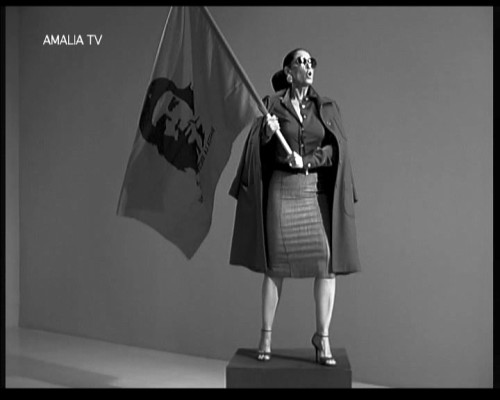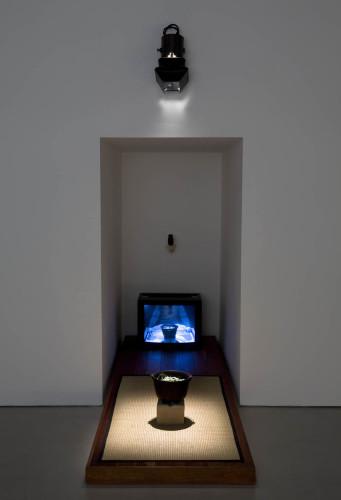 Delicate and ephemeral materials are often used in contemporary art, making conservation and restoration quite the challenge. Artistic tendencies during the 20th century were characterised by the experimentation of new techniques, the use of extra-artistic, delicate material and the creation of works whose deterioration had been taken into account by the artists themselves. Innovative technology, widespread use of electronic media and the arrival of digital techniques have all contributed to the initiation of collaborations among historians, critics and artists with restorers and other specialists for the purpose of developing a theory of contemporary art restoration.
Delicate and ephemeral materials are often used in contemporary art, making conservation and restoration quite the challenge. Artistic tendencies during the 20th century were characterised by the experimentation of new techniques, the use of extra-artistic, delicate material and the creation of works whose deterioration had been taken into account by the artists themselves. Innovative technology, widespread use of electronic media and the arrival of digital techniques have all contributed to the initiation of collaborations among historians, critics and artists with restorers and other specialists for the purpose of developing a theory of contemporary art restoration.
If there is truth to the fact that maintenance and interventions upon contemporary art share the theoretic parameters of the restoration of artistic heritage in their entirety and the principle advanced by Brandi stating “restoration is the methodological moment of the acknowledgement of a work of art in its physical consistency as well as in its dual aesthetic-historic polarity in view of its transmission to future generations”, then we must also acknowledge the fact that new material and innovative techniques do not make it possible for restorers to draw exclusively upon established traditions, thus obliging them to intervene in a very specific manner with experimental methods.[1]
It may seem like a paradox, but even contemporary art needs restoration: it is always important to evaluate the state of conservation of those works who often call for restoration, if only a few years after their creation. This is the case of video arts. These works pose a substantial problem in terms of conservation due to the deterioration of magnetic support and the rapid obsolescence of necessary tools by cause of constant technological evolution, making it difficult to view less recent works. In the case of video formats, support becomes obsolete after a few years. The solution could be reproduction although this option can cause loss of quality – if the conversion to different supports regards videos converted from cinematic film to magnetic tape or from magnetic tape to digital support; or through duplication if a copy cannot be distinguished from the original.[2] It is possible to intervene upon the obsolescence of media means used by an artist by converting the works onto a new support, although it is necessary to define objective parameters capable of leaving the image unaltered, maintaining colour quality and luminosity.[3]
Moreover, when dealing with video installations, reconstructing the history of the use of a specific piece is fundamental. It is also essential that the restorer and conserver collaborate with the artist in order to establish a way to present the piece to the public or how to replace equipment that in only a handful of years has become obsolete. Think of the cathode ray tube television sets no longer in use by technology today found in many of Nam June Paik’s video installations; interventions upon video installations created by this Korean artist are fairly uncomplicated because Paik himself has stated on various occasions that he is in favour of substituting the pieces in his art which have become obsolete with new, more technologically advanced equipment and instruments.
Particular attention has been dedicated to new media since the 1990s and not only from an exclusively historical-critical viewpoint but to its conservational aspects as well. Contemporary art museums that have opened their doors to electronic works of art are facing problems regarding the obsolescence of their supports and the need to guarantee the possibility of viewing these works to their public. In recent years, there has been great development in the field of research related to the conservation of video works. In fact, a study on the conditions of audio-visual preservation in the United States commissioned by the Library of Congress in 1997 has brought to light the need to establish procedures to be shared for the conservation of the world’s audio-visual heritage. In the early 1990s, the Netherlands Media Arts Institute, Montevideo/Time Based Arts proposed an interdisciplinary approach to the conservation of video art and began a research project in 2000 in collaboration with the Foundation for the Conservation of Modern Art: «Project Preservation Video» is dedicated to video art preservation techniques and methods and has been distributed to museums and public collections. These issues have reached a level of concern of international proportions and at the moment a theoretic process is being developed which is entirely dedicated to this situation; internet websites of some of the most prestigious contemporary art collections and archives offer web pages dedicated to strategies and methods of conserving contemporary art and video art.
The constant need for exchanges and updates related to this issue have motivated archives and museums to put together initiatives in collaboration with artists, critics and contemporary art restorers for the purpose of safeguarding and restoring video art. Among the most important of these initiatives, we would like to mention the Variable Media Network (2002) which saw the participation of New York’s Guggenheim Museum and Montreal’s Daniel Langlois Foundation for Art, Science and Technology; the Media Matters network promoted in 2003 by Tate in partnership with New York’s MoMa and San Francisco’s SFMoma modern art museums; the Variable Media Initiative, a network that evaluates the possibilities of converting works form obsolete media formats to alternative systems; Incca-International Network for Conservation of Contemporary Art, the large online network made up of preservers, art historians and archivists from 26 different nations.
Italy has been active in this network as well: Parc (the Association for the Preservation of the Landscape, Architecture and Contemporary Art) Headquarters and Rome’s MAXXI museum are promoting the creation of a network of Italian museums dedicated to the conservation of contemporary art and a Charter of contemporary restoration. Rome Quadriennale Archives and Library (ArBiQ) are also active in the field of conservation research and new media art documentation. They have founded Media Matters, a restoration project of several works presented at the 15th Quadriennale which includes videos. Moreover, Italy has carried out an important restoration dedicated to video art: a digital preservation intervention upon art/tapes/22, one of the most prestigious videotape collections dating back to the 1970s from the Venice Biennale Collection of the Historic Archives of Contemporary Arts (ASAC).
[1] cf. Arte Contemporanea. Le ricerche internazionali dalla fine degli anni ’50 ad oggi, by Francesco Poli, Electa, Milan 2007, p. 12.
[2] cf. Conservare l’arte contemporanea. Problemi, metodi, materiali, ricerche, by Francesco Poli, Electa, Milan 2005, page 176.
[3] cf. Conservare l’arte contemporanea…, 2005, page 46.
Images
(1) Francesco Vezzoli, Amalia Traida, 2004, courtesy MAXXI -Museo nazionale delle arti del XXI secolo; (2) Bill Viola, Il Vapore, 1975, courtesy MAXXI -Museo nazionale delle arti del XXI secolo, photo by Patrizia Tocci








































